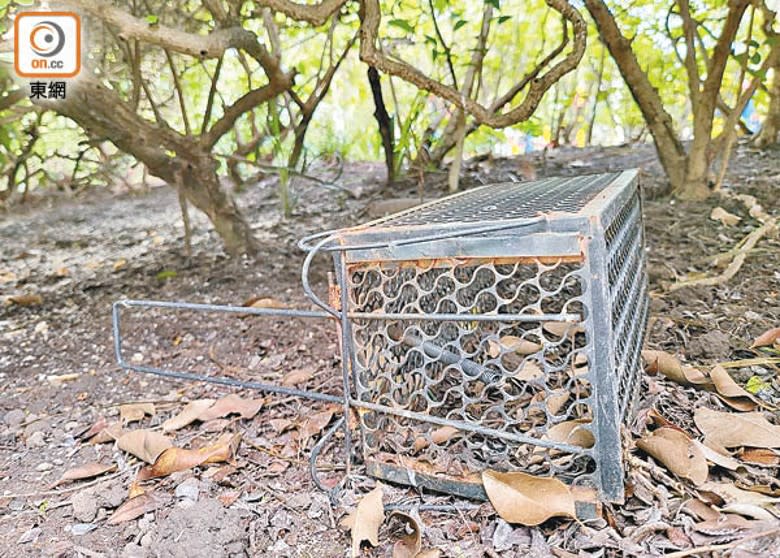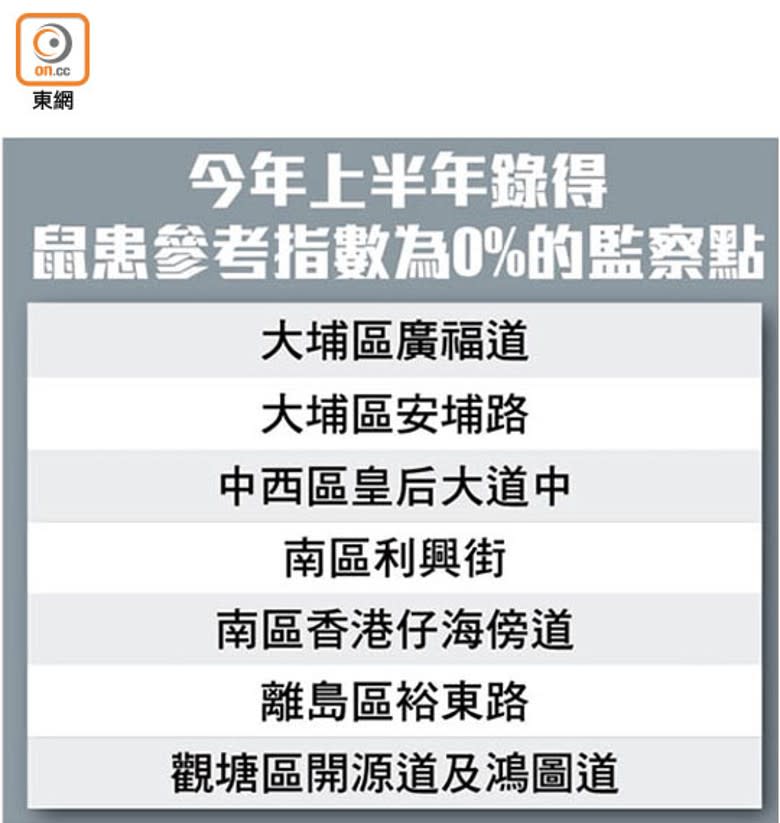The Hong Kong government “has a way” to eradicate rats and invests a lot of public funds every year to catch rats. However, rats are still everywhere in Hong Kong, and rats are rampant. The Food and Environmental Hygiene Department announced the reference index of rodent infestation in half of Hong Kong in the first half of this year. Seven of the 26 surveillance sites had an index of 0%. Among them, the indices of the two surveillance sites in Tai Po District and the district index were even more uniform. “Recorded 0%. Councilors and district councilors directly denounced that no one would believe the data of the FEHD, and even pointed out that one of the monitoring points in the district, Kwong Fuk Road, is a black spot of rodent infestation in the area. This newspaper also found rats in the Tai Po Market market within the monitoring point They tracked down and took exclusive pictures, which exploded the 0% index. The so-called “no rats in Tai Po” by the authorities is really unbelievable. If the authorities can’t catch the mice, they will treat them as if they didn’t catch them. However, pest experts point out that the reason why the authorities can’t catch the mice is because they use the wrong method and put the wrong bait.
The FEHD has set up 50 monitoring points in 19 districts across Hong Kong to investigate the rodent infestation. The investigation method is to place bait at several places in the monitoring point, usually by hanging a piece of raw sweet potato with a rope, and then observe whether the bait has been bitten by rats, and then divide the number of bait bitten by rats in the monitoring point by the The total number of baits retrieved within the total number, so as to calculate the reference index of rodent infestation of each monitoring point.
Mice don’t eat raw sweet potatoes as bait
However, the raw sweet potato bait set up by the FEHD has long been criticized by various circles for not being able to attract rats to eat. As a result, the credibility of the reference index for rodent infestation has been greatly diminished. As of yesterday, the FEHD announced that among the 26 monitoring sites with data, the most serious monitoring site is Sha Kok Street, Sha Tin District, with a rate of 12.1%; followed by the monitoring site, Cheung Chau Hsing Street, Outlying Islands District, with a rate of 8.9%.
Many streets in the worst-hit Kowloon district rebounded
In addition, there were 11 announced rodent infestation monitoring sites that recorded soaring conditions, among which Kowloon became the hardest hit area again. For example, the rodent infestation index at Nga Tsin Wai Road monitoring site recorded 12.2% in the second half of last year. After the improvement measures were taken, it was found that it dropped to 2.1%. However, within half a year, the index rebounded to 8.2% in the first half of this year, which proves that the department’s rat control failed to cure the problem. At the Ma Tau Wai Road monitoring point in the same district, the index also recorded a double increase, rising from 3.6% to 8.6% in half a year.
In addition, the reference index of rodent infestation in 7 monitoring points was 0%. For example, in the second half of last year, the index of On Po Road in Tai Po was 3.6%. The latest index returned to zero. The sub-regional index of Tai Po District also recorded zero. However, a reporter from our newspaper visited several locations in Tai Po yesterday and found that in Tai Po Market, which is within the monitoring point of Kwong Fuk Road, there were rats infesting “food” immediately after the vendors closed their stalls at night.
Expert: Misplaced mouse bait to scare away mice
Chen Zesen, chairman of the Hong Kong Pest Management Society, bluntly said that it is impossible for mice to “return to zero”, and questioned that the FEHD misplaced the mouse bait. For example, there are other foods in the surrounding environment, including food waste from restaurants, etc., which will affect the attraction of mouse bait to mice; If the mouse bait is placed in an environment with many people and vehicles, it will also scare away the mice.
Chen Kaixin, chairman of the Food Safety and Environmental Hygiene Affairs Committee of the Legislative Council, said that the calculation method of the rodent reference index has been questioned in the past and has limitations. It is recommended that the authorities review its effectiveness and monitoring locations, and make good use of the “intelligence” of community members and citizens so that The work of preventing and controlling rodents can prescribe the right medicine.
Tai Po District Councilor Au Chun-ho found it unbelievable that “Tai Po has no rats”. He pointed out that the area around the Kwong Fuk Road surveillance site is the black spot of rodent infestation in the area. Residents of old buildings often complained about rats entering the house. The concentration of restaurants is also a breeding ground for rats. He said that one night when he got off the bus at the Guangfufang garbage station, he was surprised to see dozens of mice gathering in the canal, which suddenly made his hair stand on end. The environmental protection, fishery, industry and commerce, food and hygiene committees of the Tai Po District Council will hold a meeting today, during which they will discuss environmental hygiene issues in Tai Po District, and the district director will follow up on the relevant situation.




2023-05-09 21:45:00
#rats #Tai #believes #FEHD


